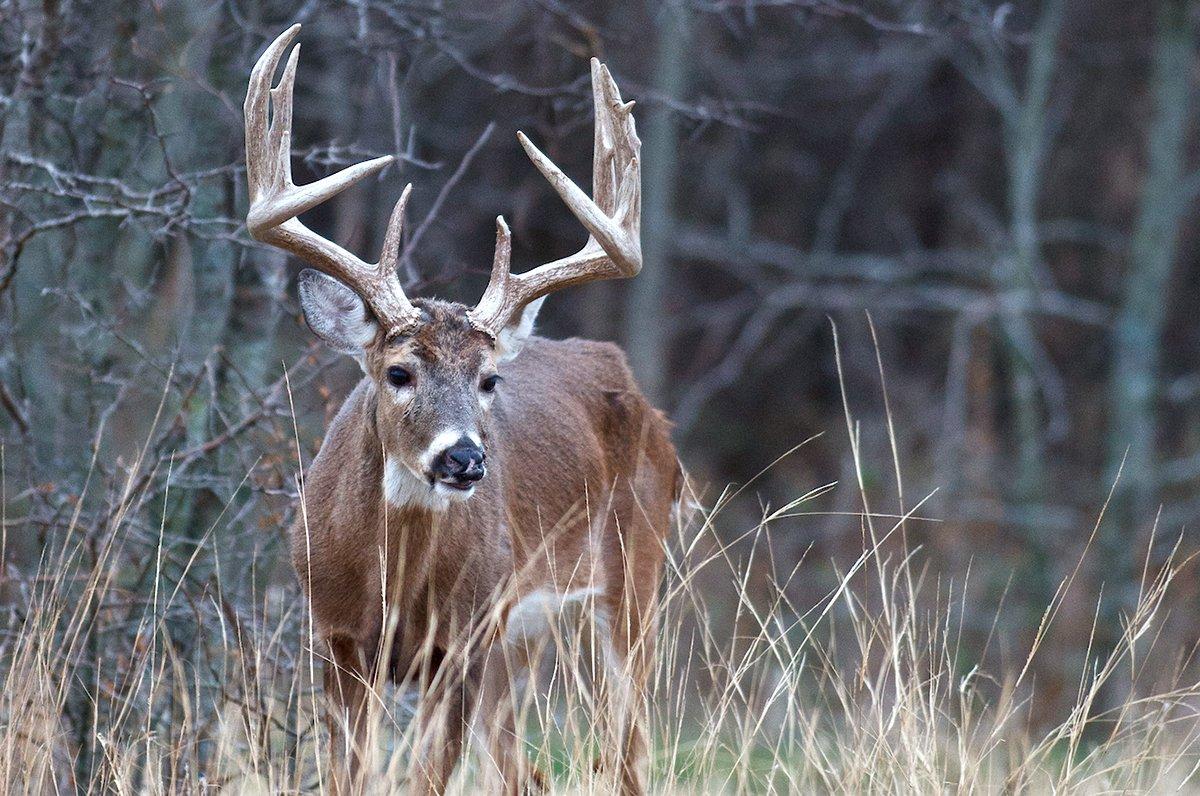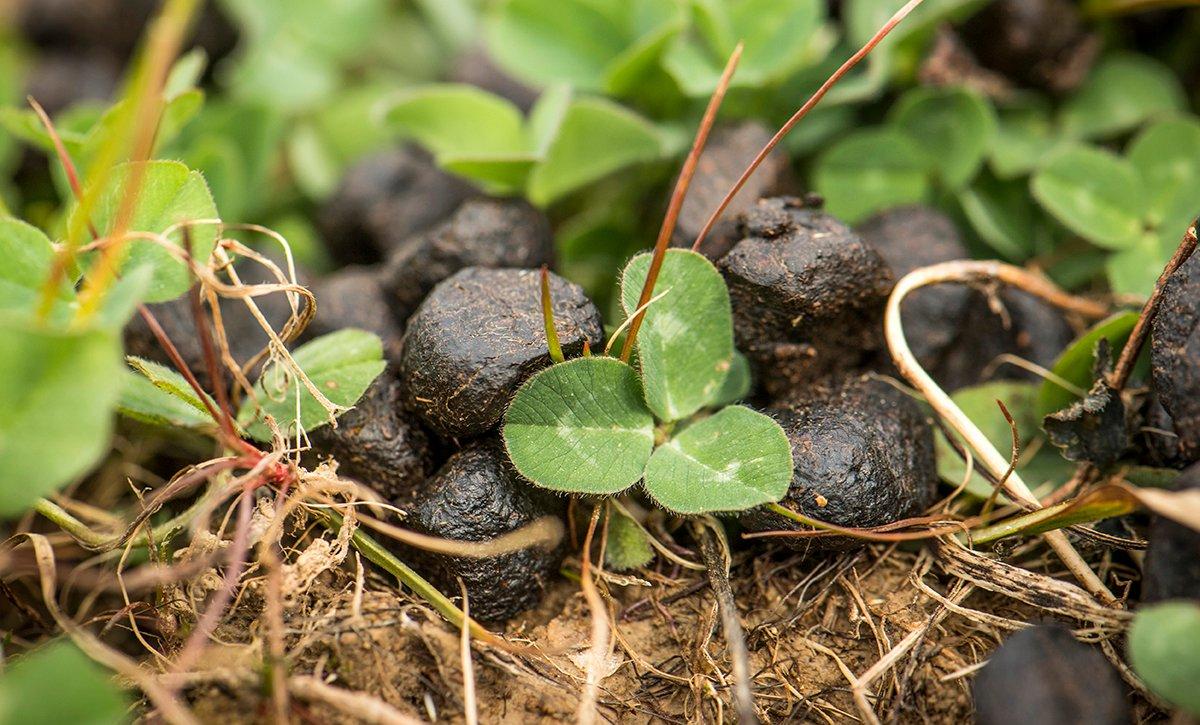Scientific tips and trivia to help your hunting, from guys and gals who study whitetails for a living
When deer scientists talk, I listen. Men and women who make a career of studying the whitetail don't do it for fame or money. Having worked for years to obtain a master's degree in wildlife ecology, and in many cases a PhD to boot, they are passionate about learning all they can about America's most popular game animal, and then implementing the best practices for managing herds across the nation.
When the biologists are also hunters, as most mentioned here are, I double down on their data because I'm confident it will help me, and you, shoot more big deer.
1. Rubs Revisited
In a Michigan study some years ago, whitetails were totally removed from an enclosure; no deer inhabited the place for three years. In the fall of year four, deer were restocked into the pen. Some of the does and bucks were from Michigan, and others were trucked in from other states.
Get this: Bucks in the newly replanted herd immediately began blazing and using the same rubs that their predecessors made years ago. Fascinating, and science to use to your advantage.
As you scout, pinpoint clusters of brown, scarred trees that bucks blazed in previous years, and hang treestands in thick cover nearby. New bucks will hit and use many of those old rubs later this fall.
2. Best Scrape Tactic
Most research over the years has found that bucks check scrapes mostly at night, and a University of Georgia study a few years ago took it to the next level. After analyzing tens of thousands of trail-camera images taken on a hunted property, they found a majority of bucks three years of age and older checked scrapes between 2 and 3 a.m.
"A majority of bucks three years of age and older checked scrapes between 2 and 3 a.m."
In response to the study, Kip Adams, lead biologist at the National Deer Association, says, To me it shows you're much better off to back off scrapes. Set up and watch a heavy trail or edge of cover several hundred yards off the freshest scrapes you find. That's where you might catch a buck moving to and from the scrapes at first or last light.
(Buy 1, Get 1: Realtree Father's Day Gifts)
3. How Rutting Bucks Travel
In an Oklahoma study of GPS-collared deer, scientists found that in early fall bucks stick to small core areas and exhibit complex mazes of movement, the result of many short-distance trips between bed and food.
But come the seeking days of the rut in late October, the same bucks show longer and more linear movements. The researchers surmised that by traveling longer distances in straighter lines, bucks maximize their chances of finding hot does.
Takeaway: Around Halloween and into November, as bucks lengthen their movements and roam more in daylight hours, expand your hunt area, too. Spread out and set stands along linear terrains that bucks will travel, like long creeks, hedgerows, and fences.
(Don't Miss: What Will Deer Hunting Be Like in 10 Years?)
4. Take Cover!
Everybody needs a safe, comfortable place to sleep, even deer, says Pennsylvania biologist Jeannine Fleegle.
Her research shows that the best security cover is vegetation thick enough to hide 90% of a deer from observation at a distance of 200 feet or less. That's pretty thick, she notes. Saplings and shrubs do the job very well.
Is that thicket 50 yards ahead dense enough to hide 90% of a bedded buck? Think like that as you scout, still-hunt, or approach a stand this fall.
5. Beat the Head Bob
Researchers at the University of Georgia's Deer Lab did a study on the whitetail's vision and confirmed two things: 1) a deer's eyes are well adapted to detect the slightest movement; and 2) to get a 3-D look at a strange, stationary object that could present danger (like you standing by a tree or up in a treestand) a deer not only has to bob its head but also move it from side to side and stare from several different angles.
Takeaway: When a doe or buck looks your way, picks you out as potential trouble and starts the head bobbing and ducking, freeze. And stay still. Only when the head stops for good and the deer relaxes and seems satisfied you are not a danger should you shift in your stand, draw your bow or whatever. It might take an old doe or buck 30 seconds or 2 minutes to settle down, so don't move too soon and get busted.
6. Swamp Giants
Biologists worked a project in southern Delaware for 4 years, capturing and collaring bucks with GPS. They separated the deer into two age classes — 4½ and younger and 5½ and older — and monitored their movements around swamps and marshes.
They found that the oldest bucks hardly ever left the swamps until cover of darkness. The younger bucks not only left the marsh on occasion, they also readily used nearby upland forests and crop fields. The 5-year-olds routinely avoided those areas.
Not using wetland areas increased a buck's risk of mortality by 2.7, meaning he was nearly 3 times more likely to be killed compared to a buck who regularly hid out in swamps.
The scientists wrote, Not using wetland areas increased a buck's risk of mortality by 2.7, meaning he was nearly 3 times more likely to be killed compared to a buck who regularly hid out in swamps.
Further, the experts noted that bucks need to learn from experience before they begin to use any nearly impenetrable sanctuary. Once they do learn to use it, they become much harder to kill.
The big tip: Hunt the fringes and limit hunting pressure in and around a swamp or any sanctuary so you won't educate mature bucks and make them un-killable.
(Don't Miss: 10 More Deer Hunting Myths Debunked)
7. Big Bucks Go Where Hunters Won't
Scientists tracked the movements of adult bucks fitted with GPS on a hunted property on the Maryland coast. Two sites in particular stood out as core areas for multiple bucks.
One is nearly impenetrable to humans, very dense greenbrier and other thorny vegetation. The only way you can get into it is to find a deer trail and get on your hands and knees and go in there, says Dr. Mark Conner, who headed up the project.
The other is a 25-acre designated waterfowl sanctuary that surrounds a pond. Human activity is restricted to avoid disturbing the geese and ducks.
This spot is basically the opposite of the first core bedding area, a mix of open woodlands, fields, and grasses. But like the other sanctuary, there is no human disturbance, says Dr. Conner.
Lesson is simple: Anywhere in America, old, big-racked deer spend most of their time where hunters can't or won't go. Hunt the downwind edges of a core bedding area and hope to get a crack at a good buck if and when he sticks his neck out.
($15 Youth Hunting Buddy T-Shirts for Sale)
8. Summer Scrapes?
Bucks scrape the most in October and November as you know, but be alert for any fresh pawing you find on a summer scout. According to noted Michigan biologist John Ozoga, Surefire sign that a mature buck survived the previous autumn and winter. A mature buck makes off-season scrapes in his core area and often near a favorite bedding cover. Remember where that core bedding area is when you come back to hunt this fall.
9. Stay or Go?
Will that big 10-pointer you spot in a bean field this August be around when bow season opens?
Dr. Grant Woods, the famous biologist from Missouri, has conducted extensive preseason censuses of deer herds throughout the Midwest. His data show that 50% of mature bucks may spend the spring and summer months at one end of their home range, then shift to a different area for the fall and winter. Woods' records show the shift typically occurs around the time bucks shed velvet, or roughly September 1-20.
If that 10-pointer does move, how far will he go? Could be a few hundred yards or several miles or anywhere in between, says Woods.
Takeaway: Scout hard for a week after September 20. If your 10-pointer is still there, great. If he's gone, look for other target bucks to hunt on the archery opener.
(Don't Miss: Dealing with the Deer Camp Egomaniac)
10. High or Low?
Several of Dr. Woods' studies have found that bucks prefer to bed just over the top of a hill and usually on the east side. "That's probably because in the fall, wind currents typically come somewhere out of the west, he says. When a west wind blows over the top of a hill and swirls, it creates an air cone that distributes scent in all directions.
Woods avoids setting a bow stand on or near the top of a ridge where air currents eddy, and where bucks might smell him. He recommends setting up lower on the side of a ridge, or on a flat where the wind and thermals are steadier and more predictable.
11. Do Odor Sprays Work?
As an off-shoot of a study on human scent, researchers at Mississippi State collected samples from 65 people who for hours wore either an untreated T-shirt or a T-shirt treated with a spray designed to eliminate or mask body odor. The researchers tested four hunting sprays out of dozens on the market, though they did not identify specific brands.
Analyzing hundreds of volatile organic compounds collected from skin particles and sweat emitted by the 65 people, the researchers found that while the untreated shirts stunk, the sprays worked on the treated shirts by significantly reducing the odor levels of 29 key compounds, either by killing bacteria, binding to the chemicals, or converting them into less volatile compounds.
Confirmation that odor-eliminating sprays work. Spray down before every hunt.
12. Punch a Tag Late on Public Land
In another study at Mississippi State, scientists tracked buck movements and found that in early- to mid-December (and into mid-January in Southern areas with peak rut in December) you can often see good rutting action on a WMA or national forest where does far outnumber bucks.
The biologists said that on uncultivated land where the buck-to-doe ratio is out of whack, there aren't enough bucks to breed most of the adult does during the peak November estrus cycle. Some 28 days later a good number of missed does cycle back into heat and draw multiple bucks out of the woodwork and concentrate them in certain areas.
If you grind it out on public and are in the right place at the right time in December or January, you might well spot a hot doe with a buck(s) on her heels. Even better, the MSU study found that bucks 2 1/2 years and older do most of the late breeding, so you might shoot a deer with a nice rack for public land.
(Don't Miss: 20 Things to Know About Deer Body Language and Behavior)
13. Low-Pressure Stands
In a South Carolina study, researchers analyzed hundreds of interactions between hunters and deer throughout an entire season. They found that, on average, mature bucks traveled 55 yards farther away from hunting stands at the end of the season versus opening week.
This confirms something I have blogged about and said on my TV shows for years: While mature bucks can't surmise you are trying to kill them, they do learn your habits and pattern you. As the season progresses, bucks see, smell, and hear us as we hike into stands, climb trees, walk out at midmorning or after dark … you get the idea. The bucks then skirt those human trails and stand locations to avoid us.
Biologists in Michigan and Minnesota have found that 5- to 40-acre conifer swamps with trees 10 to 25 feet tall and canopies 50 to 70% closed provide the best thermal cover for deer.
Takeaway: After hunting a stand for a week or so, sneak in and hang a second new stand along a nearby trail or pinch point in an area where a big deer is working. You don't necessarily have to move far, maybe only 60 to 80 yards from your original stand. Set up quietly and try to surprise a buck from the fresh spot.
14. Think Green (Part 1)
Biologists in Michigan and Minnesota have found that 5- to 40-acre conifer swamps with trees 10 to 25 feet tall and canopies 50 to 70% closed provide the best thermal cover for deer. In the late season, up North, look for green cover of that size, and hang a stand on a nearby trail.
15. Think Green (Part 2)
After killing a deer late in the season, Pennsylvania ruminant nutrition specialist Phil Anderson pokes through the paunch to see what the critter had been eating.
Ever killed a doe or buck in December when the woods are brown, but the rumen contents (of a deer's stomach) are bright green? he asks. Phil points out that deer love tender, green shoots year-round and particularly in the winter.
Next December and January, look for spots where deer have dug and pawed leaves. If you find green shoots popping up, set up there and fill your last tag.
(Don't Miss: 31 Best Tips for Hunting the Rut)
16. Rattle the Rut
Biologist Mickey Hellickson headed up a three-year project on antler rattling on a large ranch in South Texas. His team of researchers rattled 171 times during all phases of the rut, and pulled in 111 bucks.
Peak rut is no doubt the best time to rattle in the most bucks, says Hellickson. During 60 peak-rut rattling sessions, the crew rattled up 65 bucks — a 108% response rate.
They found that buck home ranges averaged 400 acres in September and October, and increased to 600 to 700 acres in November.
Hellickson found that while the number of buck encounters fall off noticeably during the post-rut, late season can be a good time to rattle in an old deer. Of the 29 bucks that responded to 51 rattling sequences during the post-rut, 20 of the deer were 3 ½ to 5 ½ years old.
Two more findings to help you out: In the study, 60 of 111 bucks (67%) came to the horns between 7:30 and 10:30 a.m. Cool mornings with 75% cloud cover and little or no wind were best.
17. No. 1 Camera Spot
In addition to his Texas research, Hellickson has conducted extensive trail-camera surveys in Iowa.
We've gotten the most images of mature bucks by far in a spot where two or more drainages or fingers of timber intersect, he says. These funnels may be large or small, but the one constant is thick cover. Find thick funnels like this and set your cameras, you'll find bucks, says Mick.
18. You Need More Stands
Researchers from North Carolina State University tracked adult bucks with GPS collars to monitor the size of their home ranges and core areas.
They found that buck home ranges averaged 400 acres in September and October, and increased to 600 to 700 acres in November. Not surprising, as both scientists and hunters have long known that bucks roam widely for does in November.
But here is news you can use: The study showed that some big bucks get a wild hair and go on rut excursions that carry them one to even four miles out of their already-extended home ranges.
To up the odds of seeing and shooting a giant on the prowl, expand your territory as much as you can, and increase your number of stand sets. Say in October you hunt three stands on 150 acres near an ag field. Well, come November, branch out and hang three or four more sets across the property if you have the access.
This will give you multiple stands to hunt in rotation throughout November and early December. It not only increases your chances of encountering a known giant on an excursion, but also ups the chances of seeing a new 10-pointer that might bounce off a neighbor's land as he expands his movements in search of does.
(Don't Miss: Photo Gallery: From Buttons to Booner)
Good luck this season. If something you read here helps you tag out, rack it up to solid deer science.











